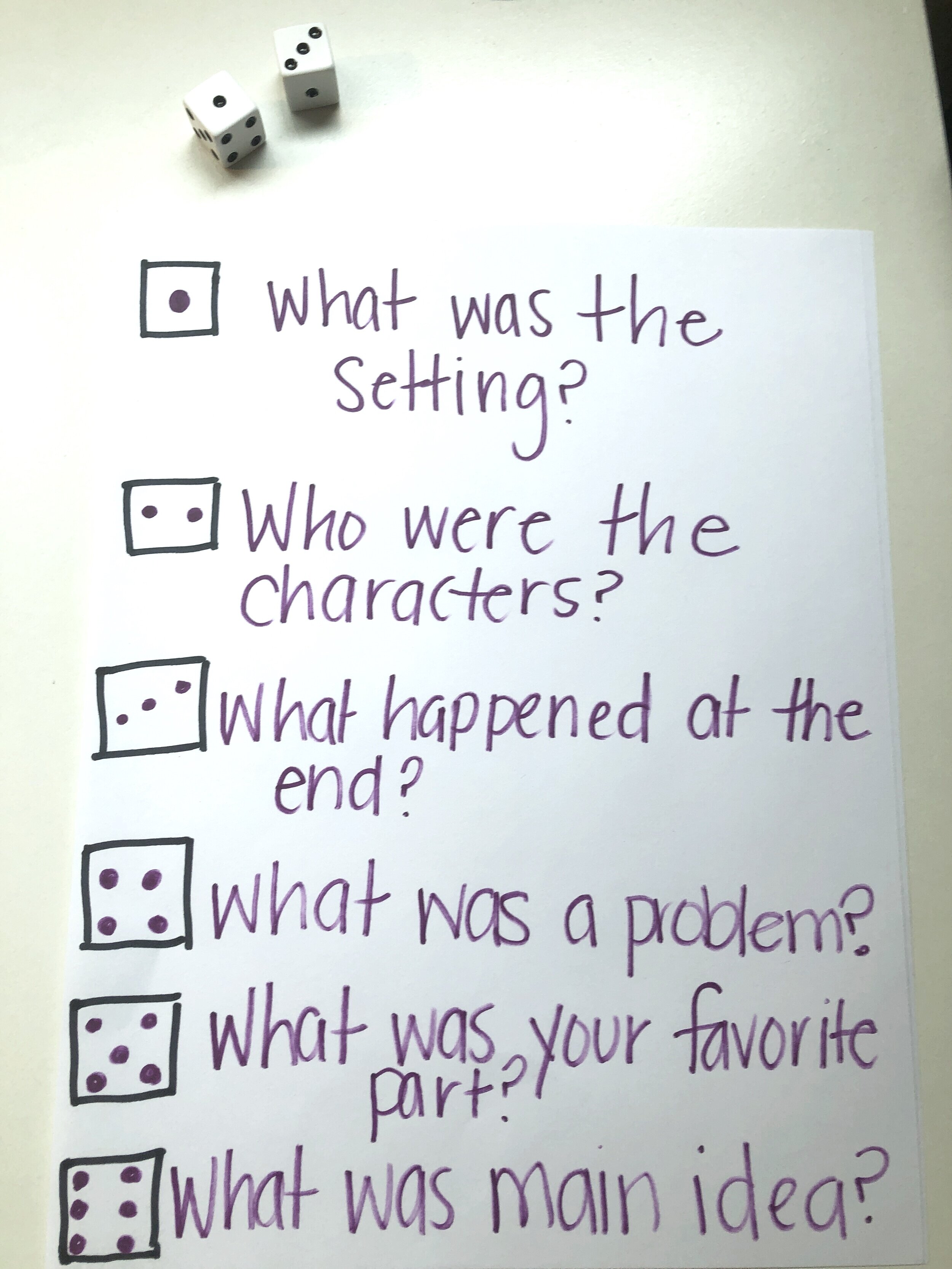Comprehension Activities
Using TV time to Build Comprehension
Let’s make the 30 minutes of TV time that you as parents are beating yourself up about and turn it into a learning experience! Comprehension can be built in a number of ways; reading a story and answering questions is certainly the first thing we think of, but through conversation, probing questions like why and how can go a long way. After your child has finished watching a movie or a show, use these questions to build comprehension without them even knowing it!
How did the movie or show end?
Who is your favorite character and why?
Which part of the movie or show was your favorite?
Was there a problem? What happened and how was it solved?
What was the setting of the movie or show?
What was your favorite part and why?
What happened at the beginning of the show?
Was there anything that surprised you?
Comprehension Games
Dice Games
Materials: paper, dice, marker
Make comprehension more fun after reading by having your child roll the dice to answer the questions. Questions can be interchanged based on books, level, etc.
Responses can vary based on each child: children can verbally say the answer, draw a picture of the answer, or write about their answer.
Spinners
Materials: paper, marker, pen/pencil, paperclip
Create a spinner with a variety of questions with just a piece of paper and marker.
Make it basic and to the point:
What was the setting?
Who were the characters?
What happened in the story?
Make it more complex:
Write three sentences about the problem and how it was solved
If you could change the ending, what would it be?
Inferencing Activities
Inferencing is one of the most difficult comprehension skills to grasp for children at all ages. There are ways to build comprehension that can be fun and silly using simple things around the house.
Use Magazines and Media
Put those magazines to good use! Magazines are full of toys, things to buy, food, movies, etc. This is a fun way to approach inferencing at home. Flip to a page and ask your child to guess what the item is based on the information given. Here are a few examples of things you may see:
Electronics Section
I have buttons you press. You use me to add, subtract, multiple and divide. You can keep me at home or at school. (calculator)
I am small. Many people have me. You use me to make calls and text. (phone)
Toy Section
I am something you use outside. I have four, small wheels. You stand on me and use your foot to make me move. (skateboard)
I am a toy that goes on a track. You can ride me to go to different places. I stop at stations. (train)
Inferencing Bingo
Create bingo boards with different items, animals, activities, etc.- rather than saying the name of the items, describe them and have your child infer what you are talking about.
What’s in the Bag?
This silly game goes a long way! You can turn this into your own version of charades. Have a bag of a variety of different items around the house and describe it. See how many you can get in one minute!

